KhaoBin Cave was explored to open its entrance by Forestry Department on around B.E.2525. It is a big cave with the internal area of over 5 rais (more than 8,000sq.meters). The walk-ways inside were improved for comfortable walking-viewing of the cave at a distance of about 500 meters. Inside the cave, it was divided into 8 rooms, each room has different beautifulness.
KhaoBin Cave was a natural phenomenon occurring by the action of the water which is believed that all caves were previously under the water.
The nature of occurring on the shape of the cave in general, due to the erosion of the water. When the tidal inside the cave is all the times different, thus making strange geologic shapes, such as, small or big hollow different depths, darkness and different humidity. The hollow, which was water way at present had been clogged, when it is raining, it will remain only small drops of water which absorbs Carbon dioxide (CO2) in the atmosphere, passing through the rock layers, resulting in chemical reaction converting CO2 into mild Carbolic acid or Calcium Carbonate, creating Stalagmites, Stalactites and Pillars naturally, thus making the views inside the cave of different beautiful characteristic.
Occurrences of various shapes of rocks inside KhaoBin Cave :-
1. The rock with the shape of straw or tube at a diameter of 2-4 inches, thin wall, the water flows through the center of the straw creating rings of limestone at the end of the staw, converted into longer Stalactite, its end may be 1.80 meters long, this occurrence will be called “Soda Straws”.
2. When the straw is clogged, the water drops will flow at the external skin of the straw instead of in the central hole. When the water evaporated, the regimented mineral elements will cover the straw and become bigger, this occurrence will be called “Stalactite”.
3. The water dropping from the end of stalactite of the floor of the cave, converted into stalagmite from the floor at the position pointing directly to the stalactite. This stalagmite often has sharp-end, this occurrence will be called “Stalagmite”.
4. When the length of the Stalactite reaches the floor or when the length of Stalagmite reaches the ceiling or reaches the Stalactite, or when the Stalagmites of opposite positions link together, this occurrence will be called “Column”.
5. Group of small-bristly rocks of different sizes and shapes formed from Calcium carbonate often appears on the wall of the cave on the part where the flood used to occurred and has the shape similar to cabbage or coral or maize grain, this occurrence is called “Cave Grape”.
6. The rocks which have the shape similar to the curtain cloth occurred by the water dropping on the sloped wall, drop by drop, passing through original line, creating Calcium carbonate of thin sheet and is often transparent and extends its length further. Its length may be many meters, this phenomenon will be called “Draperies”.
7. The rocks which have the shape similar to the curtain cloth, but light and dark colored bars can be seen due to the difference of the constituent of the elements in the water-drops, this will be called “Bacon Formation”.
8. The shape of formed Rock which is similar to the dam holding the water or similar to the dam holding the water or similar to the steps occurring on the floor area of the cave or on the lines of water-flow, when the water overflows the dam, it will leave limestone sediment accumulated bit by bit, this phenomenon will be called “Rimstone Dams”.
9. When the water falls as thin sheet, steadily passing the wall, flow or existing Stalagmite or Stalactite, thus forming a sheet of limestone of a shape similar to the coating sheet, this phenomenon will be called “Flowstone Dams”
10. Circular rock grain likes pearl, its diameter is mostly no move than 1 inch, forming by the coating of limestone at the sand grain or small sediment, this phenomenon will be called “Carve Pearls”
11. The rocks that have spiral shape extruded from the wall, the floor or the Stalagmite, the reason of its twisted shape likes a worm is due to the water dropping slowly before it evaporates, thus making crystallization of sediments at the end in the different positions, this phenomenon will be called “Helictites”
12. The rocks that have the shape similar to the petal of the flower will be found on the rather dry wall of the cave. It is the rock that extruded, in addition from the bottom. Each petal will be forced out and not at the end of Stalagmite or Stalactite. The length of this petal may be 30 centimeters or longer, this phenomenon will be called “Gymusum Flowers”
สมัครสมาชิก:
ส่งความคิดเห็น (Atom)

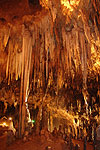
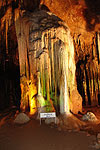
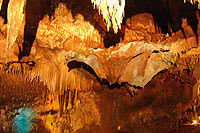
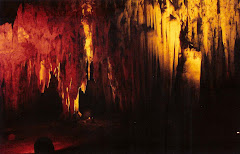


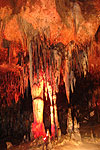
ไม่มีความคิดเห็น:
แสดงความคิดเห็น